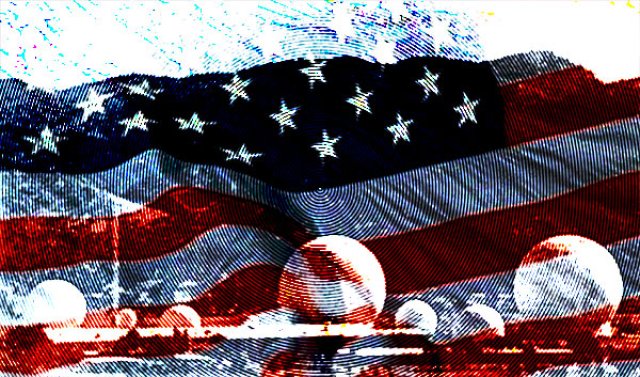
About 80 people gathered at Victorian Trades Hall on June 20 for a public forum about the United States’ increased military presence in Australia. The forum was organised by the Medical Association for the Prevention of War, with the support of Victorian Trades Hall council, the Philippines Australia Solidarity Association and Spirit of Eureka, among others.
Speakers included Professor Richard Tanter, a senior researcher from the Nautilus Institute, Pacific Island affairs writer and researcher Nic Maclellan, Japanese for Peace activist Maki Yohana and “Ban the Bases” campaign coordinator, Boyette Jurcales Jr.
Tanter said the US has no official military bases in Australia, but controls about 40 bases, and possibly more, around the country.
This includes the Pine Gap base in the Northern Territory and a proposed new base in Darwin, which is planned to house 2500 US marines.
Tanter called for a public debate about security and defence, which takes up the role of China in the Asia-Pacific region, the consequences of the current and projected force structure and basing arrangements and the importance of a non-nuclear alliance.
Maclellan spoke about the links between militarisation and arms manufacturers, in particular the growing list of European armament producers competing for contracts with the federal government.
He gave special mention to the once independent Pacific Island nation, Guam, now under direct US jurisdiction, and one of the most militarised places in the world. A third of Guam’s land mass is under direct US military control, including a base for nuclear attack submarines and several air bases.
Yohana and Jurcales spoke of the detrimental impacts of US military bases based on the experience of Japan and the Philippines. Yohana said: “Many Japanese provincial governments, particularly in Okinawa, have openly endorsed the Americanisation of the region and linked it directly to having a US military presence.”
Jurcales focused on the social and ecological consequences of US military bases in the Philippines, saying: “Indigenous people have been relocated from thousands of acres of land in order for the two main military bases, Subic Naval Base and Clark Air Base, to be set up.
“Our Indigenous people have also been used by the US military to train their service personnel in jungle survival.” He said: “The US [military] presence has also lead to a rise in rape, child abuse, petty crime and [the] pillaging of the island.” US military personnel are not subject to Filipino law so can never be tried for any accused crimes.
[The Medical Association for the Prevention of War will host another meeting on July 3 to plan future actions and help rebuild the anti-war movement in Melbourne. The meeting will take place at 6pm at the MAFPOW office, 54 Victoria Street, Carlton.]

Comments
Anonymous replied on Permalink
Anonymous replied on Permalink